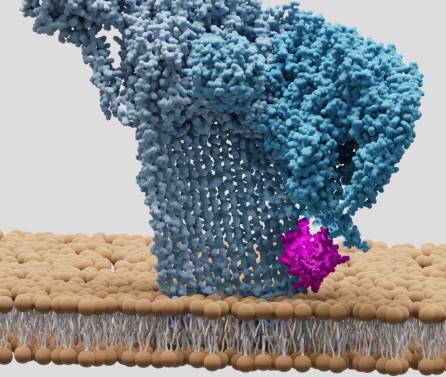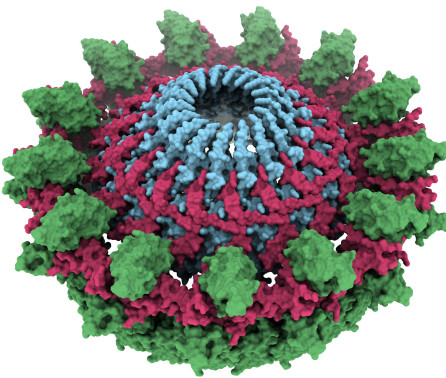BibTex format
@article{Hachani:2013:10.3791/50103,
author = {Hachani, A and Lossi, NS and Filloux, A},
doi = {10.3791/50103},
journal = {Jove-Journal of Visualized Experiments},
title = {A visual assay to monitor T6SS-mediated bacterial competition},
url = {http://dx.doi.org/10.3791/50103},
year = {2013}
}
RIS format (EndNote, RefMan)
TY - JOUR
AB - Type VI secretion systems (T6SSs) are molecular nanomachines allowing Gram-negative bacteria to transport and inject proteins into a wide variety of target cells1,2. The T6SS is composed of 13 core components and displays structural similarities with the tail-tube of bacteriophages3. The phage uses a tube and a puncturing device to penetrate the cell envelope of target bacteria and inject DNA. It is proposed that the T6SS is an inverted bacteriophage device creating a specific path in the bacterial cell envelope to drive effectors and toxins to the surface. The process could be taken further and the T6SS device could perforate other cells with which the bacterium is in contact, thus injecting the effectors into these targets. The tail tube and puncturing device parts of the T6SS are made with Hcp and VgrG proteins, respectively4,5.The versatility of the T6SS has been demonstrated through studies using various bacterial pathogens. The Vibrio cholerae T6SS can remodel the cytoskeleton of eukaryotic host cells by injecting an "evolved" VgrG carrying a C-terminal actin cross-linking domain6,7. Another striking example was recently documented using Pseudomonas aeruginosa which is able to target and kill bacteria in a T6SS-dependent manner, therefore promoting the establishment of bacteria in specific microbial niches and competitive environment8,9,10.In the latter case, three T6SS-secreted proteins, namely Tse1, Tse2 and Tse3 have been identified as the toxins injected in the target bacteria (Figure 1). The donor cell is protected from the deleterious effect of these effectors via an anti-toxin mechanism, mediated by the Tsi1, Tsi2 and Tsi3 immunity proteins8,9,10. This antimicrobial activity can be monitored when T6SS-proficient bacteria are co-cultivated on solid surfaces in competition with other bacterial species or with T6SS-inactive bacteria of the same species8,11,12,13.The data available emphasized a numerical approach to the bacterial competition assay
AU - Hachani,A
AU - Lossi,NS
AU - Filloux,A
DO - 10.3791/50103
PY - 2013///
SN - 1940-087X
TI - A visual assay to monitor T6SS-mediated bacterial competition
T2 - Jove-Journal of Visualized Experiments
UR - http://dx.doi.org/10.3791/50103
UR - http://gateway.webofknowledge.com/gateway/Gateway.cgi?GWVersion=2&SrcApp=PARTNER_APP&SrcAuth=LinksAMR&KeyUT=WOS:000209226900017&DestLinkType=FullRecord&DestApp=ALL_WOS&UsrCustomerID=1ba7043ffcc86c417c072aa74d649202
UR - http://hdl.handle.net/10044/1/65720
ER -

